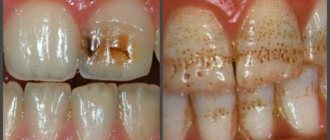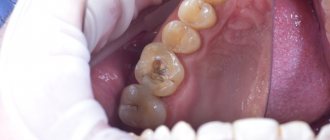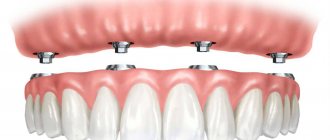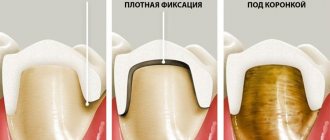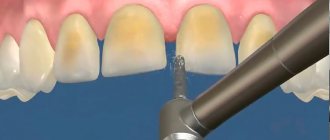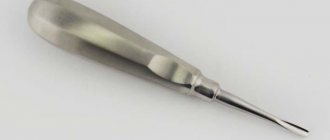Dental composites are polymer multiphase compositions of varying degrees of viscosity used for dental treatment and restoration.
They contain an organic matrix, an inorganic filler (it must be at least 50% by weight) and silane (silicon hydride, which acts as a binder between the filler and the matrix).
The matrix is the basis of the composite, its frame, in which all other components are placed. It determines the basic properties - biocompatibility, adhesive characteristics, plasticity. Affects color stability, strength, polymerization shrinkage.
The matrix is based on polymer resins - decanediol methacrylate, bisphenol glycidyl methacrylate, urethane dimethyl methacrylate and others. To impart the necessary properties, additives are introduced into the resin.
- Polymerization inhibitors. Increases operating time and increases its shelf life.
- Catalysts. The polymerization process is started. Co-catalysts provide chemical cure. Photoinitiators are responsible for the polymerization of light-curing compounds.
- UFL absorbers (ultraviolet stabilizers). Prevents color change due to sunlight.
The filler is present in the substance in the form of particles evenly distributed in the resin. Their type, size and shape determine water absorption, radiopacity, strength, shrinkage, and abrasion resistance.
The filler is made from the following materials:
- glass;
- silica;
- polymerized crushed;
- titanium and zirconium silicate;
- quartz;
- heavy salts;
- oxides of some metals.
Silane is a bifunctional substance that provides a bond between the organic matrix and the inorganic filler. Its presence is a feature of dental substances that distinguishes them from plastics.
Classification of composites in dentistry
Composites used in dentistry are multiphase compositions. They vary in degree of viscosity. The main functions performed by composites or photocomposites in dentistry are therapeutic and aesthetic. They gained popularity due to their plasticity, which is combined with strength.
The classification of these dental products is large and complex. This is due to the variety of dental composites available. They differ in the components in the composition, in the size of the filler, in function and other indicators. For example, different types of teeth will be used depending on their function. There are composites that are intended for the treatment of front teeth and lateral teeth necessary for chewing food. There are formulations that are suitable for all teeth.
Classification by curing mechanism
- chemically cured composites;
- hot curing (the polymerization reaction is initiated under the influence of high temperatures);
- cold curing (the reaction is initiated by a redox mechanism at room temperature);
- light curing.
Light-curing composites vary in paste consistency. They are divided into dense, or packable, as well as varieties of fluid or universal (medium) consistency.
The basis of composites in dentistry
Composite materials in dentistry consist of three components:
- Organic matrix;
- Inorganic filler (at least half of the total mass);
- Silane (silicon hydride, connects the first and second components).
The matrix, or matrix, is the main component of the composite, its base. The quality of the product depends on the base: compatibility with the patient’s body, flexibility, strength of fixation. The matrix is responsible for maintaining the desired shade and volume. The basis is polymer resins, for example, bisphenol glycidyl methacrylate or urethane dimethyl methacrylate. The resin does not perform all functions on its own, but uses auxiliary substances:
- Polymerization inhibitors – extend service life;
- Catalysts – begin polymerization;
- Co-catalysts and photoinitiators – promote curing;
- UV absorbers - retain color.
What are composites made of in dentistry?
The material that acts as a base is supplemented with particles (filler). The filler is mixed with the matrix. Particles differ in type, size and configuration, depending on this the properties of the resulting mixture change. The type of particles affects how the filling appears on an X-ray, how it absorbs liquid, resists physical impact, and so on. The particles can be made of glass, silica, titanium zirconium silicate, quartz, heavy salts or oxides of various metals.
The composition of the composites also includes silane. It performs two functions. It is a binder between filler particles and the matrix of composite materials in dentistry. If silane is present in a composite, it is different from other materials such as plastics.
Where is the best place to fill teeth in Kharkov?
For high-quality and aesthetic dental fillings, we invite you to the Misto Dent dental clinic. To accurately diagnose caries, we use the Diagnocam laser device. We work only with proven composite materials from foreign manufacturers. The use of anesthesia is a mandatory stage of dental filling in our clinic.
Our highly qualified specialists restore teeth quickly and painlessly, thanks to experience and a modern device for computer anesthesia STA. Regardless of whether you want to cure or make your teeth more attractive, by entrusting this procedure to our doctors, you will be satisfied with the result.
To obtain the highest quality results, all restorations at MistoDent are performed under magnification, using a Carl Zeiss and Leica operating microscope.
| Call our phone number: 38, we will be happy to answer all your questions or schedule a consultation at a time convenient for you |
Qualities of composite filling materials
In order to choose the right composition, you need to know what qualities it has:
- Resistance to compression or tension. Can vary from 220 to 450 MPa, influenced by how heavily the material is filled.
- Resists wear. Depends on particle size.
- Color preservation.
- Visibility on X-ray. Can be 130–350%.
- The degree of shrinkage during hardening. Varies from 1.6 to 5.5%.
- Conversion of material density under the influence of mechanical load. Without external influence, the viscosity should increase.
- Thermal expansion. It is required to match the expansion natural to the tooth.
- Flexibility, the ability to change shape when compressed or stretched.
- Compatibility with the patient's body, taking into account international standards (ISO).
- Comfort when working, the ability to quickly complete a task with minimal effort.
- Appearance – the ability to choose the desired color, create a natural coating.
Plastic Safety Standards
For all types of prosthetics, special composite compounds are used, approved after many years of testing. The use of polymers is regulated by GOST 31574-2012. Its requirements correspond to international ones - ISO 4049:1988 for filling materials and ISO 10477:1992 selection of materials for bridges or crowns. The determining indicators of the reliability of orthopedic compositions are the following:
- strength;
- hardness;
- elasticity:
- viscosity;
- plastic;
- fluidity.
Amount of filler for composite materials in dentistry
The filler consists of particles; in order to give the resulting composition certain properties, different particle sizes are selected. Large particles do not withstand friction and physical impact well and quickly begin to shine unnaturally. Particles larger than 0.1 microns are considered large. They can be glass or quartz. They also contain chemicals: aluminum, barium, lithium, strontium, titanium. Fine particles can be obtained using silica.
Classification of composites by particle size:
- Microfilled (from 0.04 to 0.4 microns);
- Mini-filled (from 1 to 5 microns);
- Macro-filled (from 8 microns);
- Microhybrid (mixture from 1 to 5 microns and from 0.04 to 0.1 microns);
- Macrohybrid (mixture from 8 to 12 microns and from 0.04 to 0.1 microns);
- Mixed compositions (from 0.01 to 0.1 microns, from 1 to 5 microns, from 8 to 5 microns, from 1 to 5 microns);
- Nanofilled (less than 100 nm);
- Nanohybrid (a combination of different values from 0.004 to 3 microns).
Possible applications of flowable composites
1996 was a special year, because it was in this year that flowable composites were developed, which can be said to change the entire development of adhesive dentistry.
The first generation of flowable composites was developed to simplify their placement and expand the range of possible applications in clinical practice. The first flowable analogues consisted of filler particles identical to those in a conventional hybrid composite, while the number of such particles was reduced, and the number of diluent monomers was, on the contrary, increased. Thus, it was possible to achieve fluctuations in viscosity and fluidity parameters, as well as certain handling characteristics that made these materials ideal for everyday practice. Manufacturers have presented flowable composites as materials suitable for a wide range of applications, including all classes of anterior and distal restorations, restoration of amalgam margins, block-out provision, repair of composite and ceramic restorations for core formation, restoration of crown margins, use as a spacer or sealant, for preventive composite restorations or for easy restoration of the incisal edges of teeth, fixation of veneers, production of composite inlays and onlays, restoration of enamel defects and areas of pores in previously formed restorations.
Unfortunately, the first generation of flowable analogues, taking into account their not very high mechanical characteristics such as bending resistance and wear resistance, was significantly inferior to conventional hybrid composites: in fact, a reduction in the amount of filler in their composition by 20-25% was the reason why they turned out to be definitely no better than hybrid composites. A significant number of mechanical properties of materials largely depend on the filler phase, including compressive strength and/or hardness parameters, flexural strength, elastic modulus, coefficient of thermal expansion, moisture absorption and wear resistance. Thus, reducing the filler content, as reported by Bayne et al, resulted in the properties of flowable composites being only 60-80% of those of conventional composites, which were significantly less flowable. In one scientific study, an example was given that two materials of the same brand and grade, one of which was flowable and the other was a conventional hybrid, differed significantly in most of their mechanical characteristics. Taking this into account, all attempts by doctors to use the first fluid analogues for all purposes proposed by the manufacturer led in many cases to clinical failures or, more precisely, to less effective results than expected. Consequently, in this case, the marketing component played against itself, and clinicians realized that flowable analogues are still not the same classical composites.
Since the past is the best lesson for the future, the formulation of all possible applications of current composites is based on the results of evidence-based research, which determines the specifics of the materials in comparison. Although the physical and mechanical properties of a material do not always directly correlate with the clinical characteristics of their application, in most cases they still influence the prospect of their use in specific clinical situations. The clinical durability parameters of restorations made from certain materials can only be assessed through the necessary clinical studies and appropriate experiments.
New generation of flowable composite materials
Currently, there are many flowable materials that continue to be researched and improved. These composites are a worthy alternative to classical ones with higher viscosity, and further developments are being carried out in order to still achieve the goal of obtaining a composite material with ideal or almost ideal characteristics that would help to maximally imitate the structures of enamel and dentin tissues. Since the mechanical properties of even current restoration materials are approaching the properties of enamel and dentin, the duration of their functioning increases significantly. The ideal restorative material must meet three main parameters: function, aesthetics and biocompatibility. In addition, optimizing the adhesion of the composite to enamel and dentin significantly increases their mechanical strength, marginal adaptation and condensation level, positively affecting the reliability and durability of the restoration. Of course, it is difficult to achieve ideal solutions, but nanotechnology used today helps in achieving the necessary effects and results.
Selection of restoration materials
In the process of selecting the appropriate material for any particular clinical situation, it is necessary to evaluate at least two factors - mechanical and esthetic criteria, with the understanding that there are other variables that influence the prognosis of the future restoration. The doctor must always take into account the technique of introducing the material, the configuration of the cavity, the predicted position of the edges of the filling, the intensity of polymerization, the anatomy of the tooth, occlusion and the level of isolation of the working field. Considering such a huge number of factors, it is quite difficult to choose a specific material, so in the next information block we will analyze at least the main selection criteria that determine the effectiveness of the treatment result.
Mechanical and aesthetic requirements
In composite production technology, the particle size of the filler, as well as the amount of it, influences the characteristics of the material, determining its overall clinical success. Simply put, the mechanical and physical properties of composites improve as the number of filler particles increases. Such properties include compressive strength and/or material hardness, flexural strength, modulus of elasticity, coefficient of thermal expansion, moisture absorption and wear resistance. The aesthetic appearance of the surface of a composite restoration is also a direct reflection of the particle size parameter. Aesthetic restorations require certain optical properties that mimic natural tooth tissue as much as possible. Since the composite does not consist of hydroxyapatite crystals or enamel prisms or dentinal tubules, they must be simulated due to the characteristic behavior of light passing through the restoration, which along this path has time to be reflected, refracted and absorbed. New composite materials have optical properties that make the tooth polychromatic. In addition, the size and distribution of filler particles can influence the color and esthetics of the restoration through the so-called “double layer effect” or the so-called “chameleon effect” or “mixing effect”. This effect is achieved due to the almost similar nature of light transmission through hard tissue and composite restoration, which is practically not disrupted at the composite/dentin (enamel) interface. In addition, the composition and characteristics of the filler particles themselves also influence the surface quality of a composite restoration. In newer forms of filler, the filler particles approach almost nanosize, and improvements in the parameters of shape, orientation and concentration have a positive effect not only on the physical and mechanical properties, but also on the optical characteristics of the restoration. In addition, hybrid composite systems consisting of nanoparticles allow achieving a simply perfect polished material, thus determining improved integration between the restoration and the natural tooth structures.
Nanotechnology and composite materials
Nanotechnology, or molecular manufacturing, helps ensure that the composite is filled with much smaller particles than were previously available. Moreover, such particles can also be more soluble in higher concentrations, and can combine during the polymerization of the material, forming slightly larger particles. In addition, the parameters of mechanical strength, marginal adaptation and compaction are also influenced by the adhesion factor, which determines the reliability and durability of the restoration.
Currently, the particle size of many conventional composites differs significantly from the structural dimensions of a hydroxyapatite crystal, dentinal tubules or enamel prisms, but even these can range from macroscopic (40 - 0.7 μm) to nanosize (1 to 10 nm) . Nanotechnology, simply put, helps blur the line between composite and hard tissue, thereby maximizing the esthetic and functional outcome of a restoration. The nanohybrid composite system (G-aenial Universal Flo, GC America) has exactly these characteristics. The G-aenial technology provides for dense filling of the composite with nanoparticles due to their very small size, uniform shape and uniform distribution. Thus, the particles are very close to each other, forming a homogeneous matrix with improved chemical and physical properties. In addition, a proprietary chemical treatment of the filler particle ensures proper miscibility of the monomer surface, thereby strengthening the bond between the resin and filler in the composite structure. Recent studies indicate that flowable composites exhibit shrinkage levels comparable to conventional composites, and data from today's manufacturers only confirms the fact that the physical and aesthetic properties of modern flowable analogues are in no way inferior to hybrid restorative materials, and in some cases even surpass the latter . Clinically important characteristics of the material include improved handling and investment properties, improved adaptation to the internal walls of the cavity, increased wear resistance, greater elasticity, color stability, improved polishability and polish level retention, as well as radiopacity comparable to enamel. Thus, modern flowable composites are actually suitable for restorations of all classes of cavities in the anterior and distal regions of the jaw.
Flowable composites for restoration purposes
Given the influence of a myriad of factors, clinicians continue to question the utility of flowable composites for certain restorative applications. Therefore, the subsequent information block will be devoted specifically to this issue.
Restorations in the frontal and distal areas
Until recently, the use of flowable composites was somewhat limited in general dental practice, but nowadays these materials are more than friendly to any dentist. At first, it was planned to use flowable analogues only in cases where little physical stress was applied to them, such as, for example, as spacers or prophylactic restorations for the restoration of small defects of classes I, II, III and V. However, modern flowable analogues of type G - aenial Universal Flo (GC America) allow the clinician to form the entire restoration from a flowable composite. In addition, research shows that the use of flowable composites helps reduce microleakage and minimize the formation of pores in the restorative structure. Other studies show that the use of flowable composites in layer-by-layer formation of restorations helps reduce the compression effect of the filling and improve its marginal sealing parameters. In addition, flowable analogues under controlled polymerization conditions can reduce the level of marginal gap formation, increase the integrative integrity of the restoration in the marginal region, and also reduce the overall level of shrinkage of the restoration. Using conservative preparation techniques and maximally simulating restorations with proper bonding treatment, flowable composites are ideal for restoring class I (Figure 1 a, b), II, III, IV and V defects (Figure 2 a, b), closing diastemas and creating straight lines. veneers (photo 3 a, b).
Photo 1a. View of a defective composite restoration with signs of recurrent caries in the area of the first left molar of the mandible.
Photo 1b. View of the restoration after restoration with a flowable composite (G-aenial Universal Flo, GC America).
Photo 2a. A type of non-carious saucer-shaped defects in the area of the lower jaw teeth.
Photo 2b. View of teeth after polishing a restoration made from a hybrid flowable composite (G-aenial Universal Flo, GC America).
Photo 3a. Type of fracture of the cutting edge of the central incisor.
Photo 3b. View after fracture restoration with flowable composite (G-aenial Universal Flo, GC America).
Composite mock-up
A composite mock-up is an excellent tool for dialogue between a doctor and a patient, and also helps to explain to the patient the essence of the necessary interventions and visualize the final result of dental rehabilitation. In addition, the composite model allows a preliminary assessment of the relationship of the final restoration with the profile of the lips, gums and overall appearance of the smile. To obtain a composite mock-up, a direct or indirect technique using a transparent matrix can be used. This manipulation can be performed directly in the oral cavity without anesthesia, while also monitoring the patient’s phonetic parameters. To duplicate the diagnostic wax reproduction, a transparent A-silicone material (Memosil 2, Heraeus Kulzer) can be used, and a transparent matrix with a composite is accordingly used to form a composite reproduction of a future restoration. This stage of treatment should be carried out before receiving the final restorations, so that the patient and the doctor can adequately assess the acceptability of future therapeutic or prosthetic structures (photo 4)
Photo 4. Composite mock-up is a tool for achieving the necessary parameters of function, aesthetics and phonetics. This model was made from a wax reproduction from a flowable composite.
Sealants and preventative composite restorations
Modern flowable composites can also be used as sealants for filling fissures and performing preventative composite restorations. These nanofilled materials are illuminated with a minimum thickness of the air-inhibited layer, thus filling all cracks and depressions. Additionally, layering flowable analogues onto composite restorations in distal areas helps improve their level of wear resistance, as the nanofilled nature of flowable composites significantly strengthens their composite matrix structure (Figure 5).
Photo 5. The use of flowable composites increases the wear resistance of restorations.
Provisional restorations: production, modification, repair
Provisional restorations provide a road map for the production of the final structure with the proper parameters of function, phonetics and esthetics. Initially, temporary structures can be made using an impression of transparent A-silicone (Memosil 2, Heraeus Kulzer) from a modeled wax reproduction. Before filling the impression with flowable composite, it is important to remember to apply some kind of release agent to prevent damage to the composite reproduction. All modifications of the resulting structure can be carried out directly with the same flowable composite, achieving the required shape and contour parameters. In addition, temporary restorations, which are used over a long period of time, help to form the necessary gingival contour in edentulous areas, as well as the shape of the interproximal papillae. In addition, the appearance of provisional crowns can be periodically adjusted by simply preparing their vestibular surface and updating it with an additional portion of the composite, after applying a primer to the prepared surface (photo 6).
Figure 6. Provisional restorations play a key role in shaping the soft tissue profile. These flowable composite constructs can help achieve the most appropriate tissue profile during periodontal surgery and also help visualize the final treatment outcome.
Splinting teeth using composites
Temporary splinting is carried out to stabilize and immobilize teeth, and is widely used in such branches of dentistry as orthodontics, periodontics, maxillofacial surgery and therapeutic dentistry. The essence of the procedure is to provide polymerization of a flowable composite on previously etched tooth surfaces in order to retain and stabilize flexible stainless steel wire, orthodontic brackets or fiberglass tape. In addition to conventional splints, partial fixed dentures can also be used to prevent super-eruption of opposing teeth, fixed orthodontic retainers or periodontal splints, implant-tooth bonding systems, stabilization devices for traumatic displacement or transplantation of teeth, and orthodontic tooth extrusion systems (Figure 7).
Photo 7. Splinting teeth using flowable composite to stabilize and immobilize teeth.
Adaptation in the area of the internal walls of the cavity
In certain cavity configurations, there is a lack of free surfaces. Thus, a high ratio between the free and adhesively treated surfaces of the defect (C-factor) is obtained, which provokes the development of high shrinkage stresses that exceed the adhesion force of the material. As a result, composite delamination, formation of marginal gaps and enamel fractures may occur. The selective bonding method makes it possible to reduce the configuration factor. In this case, the spacer is connected to the dentin, but not to the other walls of the cavity, and thus reduces the polymerization stress and improves the marginal adaptation of the restoration. The combined use of flowable and conventional composites helps achieve improved integration of the material into the walls of the hard tissue defect. The latest generations of flowable materials are filled by weight to 69%, and the average particle size of the filler is 200 nm. Composites with low modulus play the role of a kind of buffer that compensates for polymerization shrinkage, also eliminating the risk of cusp fracture or the formation of gaps during the operation of the restoration. With a low modulus of elasticity, the material can “stretch” for maximum adaptation to the tooth walls. Thus, it absorbs polymerization shrinkage by elastic elongation. In addition, low-viscosity materials improve the wettability of the restoration, which helps to achieve not only improved adaptation to the internal walls, but also reduces the formation of pores, which provoke weakening of the filling surface and the formation of micro-leakages. By understanding this complex interaction between polymerization shrinkage and adhesion, the clinician can select restorative techniques that will promote the most successful treatment outcome (Figure 8).
Photo 8. Flowable composite (G-aenial Universal Flo, GC America) is characterized by better adaptation to the internal walls of the cavity. This type of material can be used together with conventional hybrid composites or independently of them to compensate for polymerization shrinkage.
Repair of broken ceramic restorations in the oral cavity
The use of composite materials to restore the integrity of ceramic restorations contributes to the durability of the structure and improves the aesthetic parameters of compromised orthopedic units. This saves time and money for both the doctor and the patient. Adhesion between the ceramic material and the composite is the result of physicochemical interaction at the interface, both through chemical bonding and micromechanical adhesion. First, it is necessary to ensure proper surface treatment of the ceramic restoration, which may include macro-mechanical re-roughening of the surface with a diamond bur, air-abrasive treatment with aluminum particles, or etching with hydrofluoric acid. Due to the different chemical structures of silicate and high-strength ceramics, each requires a different processing method.
Silica-based ceramic restorations
A chip of silicon dioxide-based ceramic restoration must be etched with 4-9.8% hydrofluoric acid (HF), which ensures the formation of roughness on the crystalline surface of the ceramic substrate. After this, silane is applied to the etched surface, which must be applied in a layer no thicker than specified in the instructions. Too thick a layer of material provokes a weakening of the bond with the ceramics. When the tooth surface is exposed, it must be treated using a total etching and self-etching protocol. When the metal frame is exposed, it also needs to be etched and treated with a special primer for metal. A regular or flowable composite of the appropriate shade is applied to the chipped area and adapted with a brush or tool to work in proximal areas (photo 9).
Photo 9. Repair of a ceramic restoration using a flowable composite (G-aenial Universal Flo, GC America).
High-strength ceramic restorations
Traditional bonding procedures (eg, acid etching and silane deposition) used to process silica ceramics cannot provide a long-term bond with acid-resistant, non-silicate, high-strength aluminum or zirconia ceramics. Conventional acidic agents cannot provide adequate surface roughness to these materials, and silanization of them is ineffective. On the other hand, the use of silane provides increased wettability, and the application of a phosphate monomer-containing ceramic primer after air abrasion increases the shear strength between the zirconia ceramic and the composite material. Surface treatment protocols for high-strength ceramics include two methods. One involves applying a silicone coating to the crack area using CoJet-Sand (Rocatec/CoJet System, 3M ESPE), followed by the application of silane (ESPE Sil). Applying a silicone coating to, for example, zirconia ceramics provides bonding sites for silane molecules, which ensures proper wetting and retention of the composite material. The second method involves applying a commercial primer containing phosphonate or phosphate monomers. Phosphate monomers form covalent bonds with the zirconia surface and also have chemical chain ends that copolymerize with methacrylate-based composites. Currently, there are several ceramic primer systems for surface treatment based on zirconium oxide: Monobond Plus (Ivoclar Vivadent); Clearfil Ceramic Primer (Kuraray); AZ-Primer (Shofu Dental); Metal/Zirconia Primer (Ivoclar Vivadent) and Z-Prime Plus (Bisco). It is also recommended to carry out air abrasive treatment with aluminum particles before applying the primer to increase the adhesion strength of composite resins to high-strength ceramic materials. The surface treatment of the exposed tooth structure remains unchanged (eg, self-etch or total etch). The shade of the flowable or traditional composite should be selected depending on the color of the substrate (eg, opaque, transparent) and applied to the cavity, followed by adaptation of the material using a special brush and/or a long proximal instrument.
Stabilization, retention and strengthening of rubber dam clamp
The clamp is installed before applying the rubber dam, positioned and stabilized using the finger method, after which the etching procedure is carried out. The enamel is etched pointwise for 15 seconds with 37.5% phosphoric acid, then washed for 5 seconds and air dried. A self-etching adhesive (G-aenial Bond, GC America) is applied to the area of enamel and dentin coronal to the clamp site, which is then dried and polymerized. Flowable composite (G-aenial Universal Flo, GC America) is applied in the required amount and polymerized for 10 seconds. Thus, it is possible to stabilize the clamp as much as possible and ensure sealing of the working field (photo 10).
Photo 10. Stabilization of the rubber dam clamp and sealing of the working field area.
Formation of a vertical stopper for recording interocclusal relationships
This method involves modeling conical stoppers formed on the surface of the enamel of the supporting tooth, or modeling a conical stump, which will maintain the required vertical parameter of the interocclusal relationship, and serve as a third reference point for stabilizing bite parameters when checking occlusal relationships on plaster models (photo 11).
Photo 11. Formation of a conical stopper to maintain a stable interocclusal relationship.
Regrinding or restoring composite restorations
Cyclic stress and constant stress under the conditions of existing parafunctions can reach critical values, at which they provoke structural loss of hard dental tissues. The repetitive nature of the loads, in turn, can lead to debonding of the restoration at the bonding interface. Therefore, achieving adequate adhesion parameters reduces the formation of microgaps, microleakage, marginal staining and the risk of recurrent caries, while improving retention and stress distribution in the restoration structure. Both direct and indirect techniques can be used to restore tooth morphology. With the direct technique, a restoration matrix can be obtained from a wax reproduction, which is eventually placed in the desired area and filled through the hole with a flowable composite (G-aenial Universal Flo, GC America) (Figure 12).
Photo 12. Restoration of tooth morphology after wear of hard tissues or fracture; etching the surface, applying silane to the area of the old composite restoration with further application of adhesive; the use of transparent silicone material to obtain the matrix; manufacturing a transparent matrix and filling it with a flowable composite (G-aenial Universal Flo, GC America) with further polymerization of the material for 40 seconds.
Filling endodontic access holes
The primary goal of endodontic treatment is to achieve long-term results of healthy periodontal teeth. Therefore, the role of endodontic treatment is to provide an apical seal. However, in addition to this, it is also necessary to ensure proper coronal sealing of the tooth in order to minimize the level of bacterial invasion and the risk of failure of endodontic intervention. Therefore, complete sealing of the endodontic access hole between appointments and after endodontic treatment is an important part of comprehensive dental rehabilitation. One study suggests that providing a secure coronal seal reduces the risk of recurrent periapical inflammation. If the sealing of the coronal part of the tooth is not good enough, saliva can reach the apical end within only three days, after which, over the next 20 days, endotoxins of various microorganisms such as Actinobacillus actinomycetemcomitans will enter the periradicular area. For coronal sealing, there are various temporary materials such as Cavit G, zinc oxide eugenol materials or glass ionomer cements. But they not only do not provide reliable sealing, but can also disrupt the future adhesive bond of the restoration with the tooth tissues. The use of flowable composites allows for reliable clinical results to be achieved with the simplest possible processing procedure until the final restoration is placed (Figure 13).
Photo 13. Closure of the endodontic access hole using G-aenial Universal Flo, GC America.
Repair of piece teeth dentures
The teeth in the denture structure can be made of ceramic, acrylic or composite. Very often, teeth breakage occurs in emergency conditions and requires immediate replacement. Repair of such can be carried out both in laboratory conditions and in clinical settings, and in the latter case, flowable composites can be used for this purpose (photo 14).
Photo 14. Restoration of a broken tooth in the structure of the prosthesis: first, silane is applied, after which a new generation flowable composite (G-aenial Universal Flo, GC America) is applied, after which contouring and polishing are carried out.
Elimination of sensitivity in the cervical area
Sensitivity of teeth in the cervical area can occur for a variety of reasons. In more than 90% of cases, sensitivity occurs on the buccal or labial surface of the teeth. Normally, only the enamel of the tooth comes into contact with the environment of the oral cavity, and dentin, in turn, is protected from it by enamel and cement. Cervical sensitivity occurs when there is a deficiency of the enamel or cement layer above the surface of the underlying dentinal tubules. Treatment of this condition begins with eliminating the action of provoking factors and sealing the dentinal tubules. Impregnation of the tubular area with a flowable composite is a fairly successful clinical method for the treatment of hypersensitivity. A layer of flowable composite forms protection against exposure to oral factors on exposed dentinal tubules. In addition, in this way it is possible to protect the pulp from the action of toxins in the area of dentin exposure (photo 15).
Figure 15: Treatment of cervical hypersensitivity can also be achieved using a flowable composite.
Conclusion
Knowledge lies in the ability to compare old and new to achieve the most successful and necessary result. Concepts from the past provide a springboard for the future, including in the composite materials industry. Thus, it is possible not only to expand the range of applications of fluid analogues, but also to successfully use them for specific and specific purposes. Modern materials significantly simplify procedures for performing aesthetic restorations, improving the overall level of dental care. Since time is the best judge, evaluation of the long-term results of flowable composites can be carried out in the future after a certain number of necessary studies have been completed. The potential clinical applications of this type of material, which are presented in this article, demonstrate their enormous potential, creating an almost new dimension to dental practice with the targeted use of flowable composites in a huge number of clinical situations.
Author: Douglas A. Terry, Texas, USA
Composition and degree of filling of composites in dentistry
Composite materials in dentistry vary in composition. If particles of the same size are used in a mixture, they are called homogeneous. If hybrid ones are used, they are heterogeneous. If particles of different sizes are used, they are completely fulfilled. The material is filled by 80–90%, then shrinks by 1.7–2%. Mixtures of particles of different sizes are distinguished by the required hardness and durability. A filling made of this material fits tightly to the tooth. Composites are divided by level of fullness. It is determined by the mass or space that the filler occupies in the matrix. A high level of filling gives the composition strength, a small percentage of shrinkage, and visibility on x-rays. It can be filled with:
- Strong (more than 70%);
- Average (from 65%);
- Weak (up to 65%).
Classification of composite materials in dentistry according to the method of curing and consistency. Molecules of a low-molecular substance should produce a high-molecular, solid substance. After the state changes, it decreases. This is due to the smaller distance between molecules in solids. The size changes by 2–6%. The way in which the hardening process of the material begins distinguishes composites. Hardening can be initiated using light, a chemical, or a combination of both.
Based on the level of density, paste and liquid formulations are distinguished. To obtain a liquid material, it is necessary to use a modified base substance, the resin in which is highly fluid. There are also compositions that differ in average viscosity, fluidity of varying degrees, packability, and condensability. Let's look at some types of composite filling materials.
What fillings do not need to be placed?
The first and most important thing that every patient should understand is that light-curing fillings (photopolymers, heliocomposites) are the only reasonable choice in the 21st century. Even for people on a budget. Other materials are not 10 or 20 percent, but many times worse. Discussing the advantages or price/quality ratio of cement fillings in our time is as stupid as looking for advantages, for example, in reel-to-reel tape recorders. For a long time now, no one has been producing or buying cassette and video recorders, but for some reason some individuals allow themselves to install a 19th-century seal.
Plastic fillings are completely beyond reason. Acrylic oxide and similar anachronisms should have been banned for use a quarter of a century ago, since they are not only unable to stop the further spread of caries, but also provoke its progression. A plastic filling on a tooth is a direct road to pulpitis and periodontitis. You have to hate yourself with a fierce hatred to allow this to happen to you. And clinics that currently use such materials will be deprived of their license.
Amalgam fillings are famous for their durability, but due to toxicity (not for the patient, but for the environment and medical staff), dentists themselves refuse them.
Chemical composites are moderately bad - if a person lives from hand to mouth, then, of course, you can install them (it’s still better than nothing). But for most other people who do not experience urgent need every day, this will not be a justifiable choice. It may happen that such a filling will last for many years, but more often the opposite happens. After 3-5 years (or earlier), caries will develop under the “chemical” filling, and it can either reach pulpitis, or the amount of destruction will become so great that instead of re-installing the filling, the manufacture of an inlay or onlay will be required. As a result, the cost of repeated intervention increases by an order of magnitude due to the savings of thousands of rubles the first time (the approximate difference with the cost of a light-curing composite).
Chemical or light curing composites in dentistry
Compounds that harden when exposed to a chemical are usually hybrid or microfilled. They are preferred by those who value a small percentage of shrinkage, aesthetic properties, as well as those who are limited in time. But you need to deal with them carefully and quickly. As a result, some of the material remains unused. A spacer will be required to attach the material to the dentin because it only interacts with the enamel.
Compounds that harden when exposed to light do not need to be mixed. You can choose the desired shade and degree of gloss, which will be preserved due to the fact that there are no special impurities for hardening. If the light source is not powerful enough, the reaction may not occur completely. To avoid this, the composition should be applied in layers.
Thermal expansion and water absorption of composites
The thermal expansion of composites is higher than that of natural tooth dentin and enamel. This indicator depends on the amount of polymer. It is higher for microfilled composites than for microhybrid ones. They also differ in the degree of water absorption. Microfilled varieties are more likely to change light under the influence of water-soluble dyes.
The consequence of water absorption is an increase in volume, but it does not in any way compensate for polymerization shrinkage, but on the contrary leads to a deterioration in the properties of the polymer.
How does fullness affect the properties of composites in dentistry?
Macro-filled composites stand out, which were one of the first to appear on the market. They are durable and visible on x-rays. When using them, the dentist may encounter problems of insufficient polishing, unnatural shine, and roughness. Plaque will form on the patient's filling. Over time, it can change color and begin to decay, which can have a negative impact on your remaining teeth.
Half a century ago, a discovery was made in dentistry - microfilled composites were created. Doctors noted that they are well polished and look aesthetically pleasing. Now the size of particles in such material can reach 0.04 microns. The material retains its appearance and color, but is characterized by low strength, shrinkage and thermal expansion.
The most popular among dentists are hybrids, mixtures of particles of different sizes. They combine the advantages of all types of materials, but cannot be used in hard-to-reach places. The cost of such material is quite high.
Recommendations after the photopolymer filling procedure
After filling teeth, dentists usually give patients advice on what can be done after filling and what should be delayed. Temporary restrictions are imposed for the benefit of the patient - they aim to extend the life of the restorations and their aesthetics, and concern those moments when it is possible to eat, smoke cigarettes and come into contact with aggressive dyes.
After filling teeth with photopolymers, it is advisable to forget about cigarettes for two hours. Before eating you need to wait an hour and a half. You can drink water whenever you want, but it is recommended to drink black tea, coffee, concentrated juices and other drinks that can stain a fresh restoration no earlier than 24 hours after filling. Also, during the first post-filling days, women should not use bright lipstick.
Sometimes fillings need to be adjusted. If after filling, when the anesthesia wears off and sensitivity returns, the patient feels that the filling is in the way, the dentist must be informed about this. The dentist should also be aware of any other defects in the restoration if they are discovered.
Composite dental restoration, according to reviews from patients and dentists, has some disadvantages: it requires patience from the patient, since you will have to spend from one to 2-3 hours in the chair. The dentist will also require significant labor costs, as well as experience working with modern composites. In addition, restored teeth will require more careful care and periodic polishing to restore their natural shine.
Judging by patient reviews, there are still many more advantages to composite dental restoration:
- Great aesthetics.
- Reliable and durable restoration of the destroyed coronal part.
- Possibility to perform the procedure in one visit to the doctor.
- The ability to restore several dental units at once in one visit.
- The ability to perform all types of correction of the shape, color and size of the crown.
Moreover, such a procedure has practically no contraindications - they can only be considered as general severe conditions of the patient, in which any dental intervention is not possible.
Other types of dental composites
If it is necessary to place a filling on a small surface, it is better to use flowing materials. Because they are quite flexible, harden well and retain a presentable appearance. However, they will be difficult to see on an x-ray. It shrinks significantly after hardening and is not very strong.
A new and not yet fully studied material is nanocomposites. They retain color, shine, and are well polished. They are characterized by strength and a low percentage of shrinkage, but their high cost can repel the patient. The quality of restoration of this composition also requires additional research.
Another not cheap material is ormoker (organically modified ceramics). Ormoker is dense, its shrinkage does not exceed 2%. However, its appearance is not ideal. Since this composition is quite new, it has not been fully studied and requires more detailed study.
Reviews about photopolymer filling
All patients who have ever had a photopolymer filling leave good reviews. Photopolymers are especially praised by those people who have something to compare with. In cases where, for example, inexpensive glass ionomer fillings do not want to stick and fall out, photocomposite fillings function as expected.
The invention of photopolymers pleases not only patients, but also dentists. It is convenient to work with photopolymers, because their hardening process can be controlled. After applying a non-light-curing composite to the teeth, the dentist has very little time to form a filling, since the material hardens itself within a minute, or two at most. And the doctor can form a photopolymer restoration in at least five minutes, at least ten, without unnecessary haste.
Requirements for composite materials in dentistry
In order for composite materials to be used in dentistry, they must meet the following requirements:
- X-ray visibility;
- Tight adhesion to the tooth;
- Impermeability;
- Strength;
- Ability to resist friction;
- Ease of use;
- Compatibility with tooth and mouth tissues;
- Long service life;
- Naturalness;
- Compliance with the physical properties of the tooth;
- Multifunctionality;
- Availability.
Composite as a dental material has gained popularity among dentists. This is explained by the listed advantages of composite filling materials. However, the ideal composition has not yet been found. Research in this area is ongoing.
Light seal photocomposite 2 – surface (Estelite) installation
Light seal photocomposite 2 – surface (Estelite) photo
- For the restoration of teeth subject to rapid wear;
- For restoration of teeth with defects and erosions;
- Photocomposite is widely used in correcting the shape of uneven
- tooth, as well as to restore damaged edges;
- A light dental filling will reduce the distance between teeth in the smile area, giving natural aesthetics;
- And, of course, you can install a light filling after caries treatment.
Often, light fillings are widely used in the treatment of frontal and posterior teeth. In each case, the final shape of the filling is given after it has filled the entire tooth cavity. After the tooth has been given its final shape, the dentist works on the filling using an ultraviolet lamp.
To find out the cost of a light filling, you need to visit a dentist so that he can examine the tooth. In most cases, the price depends on the volume of the cavity and the required amount of filling material to fill it. An important role in pricing is played by the manufacturer and the country from which the filling material is supplied.

